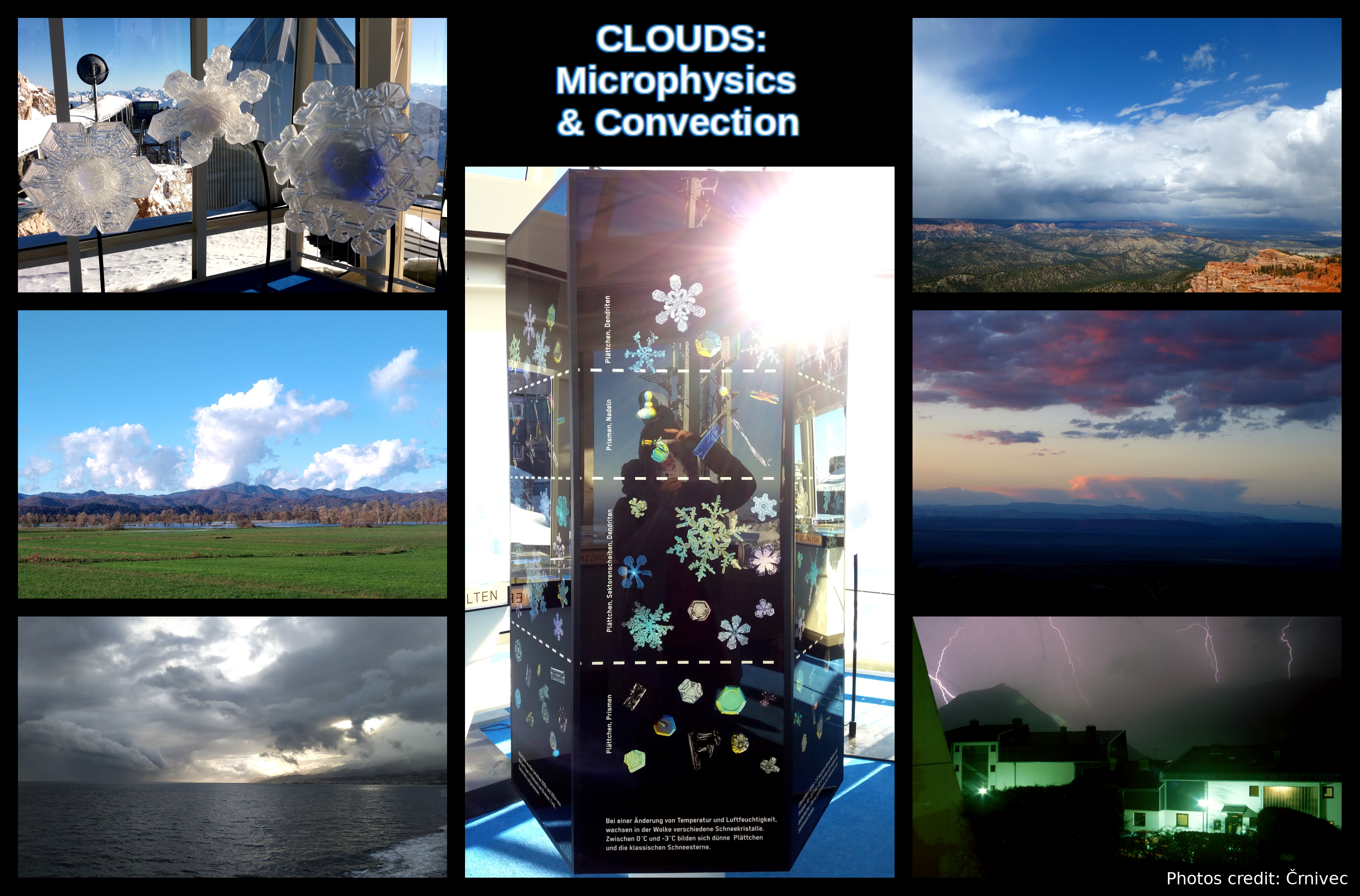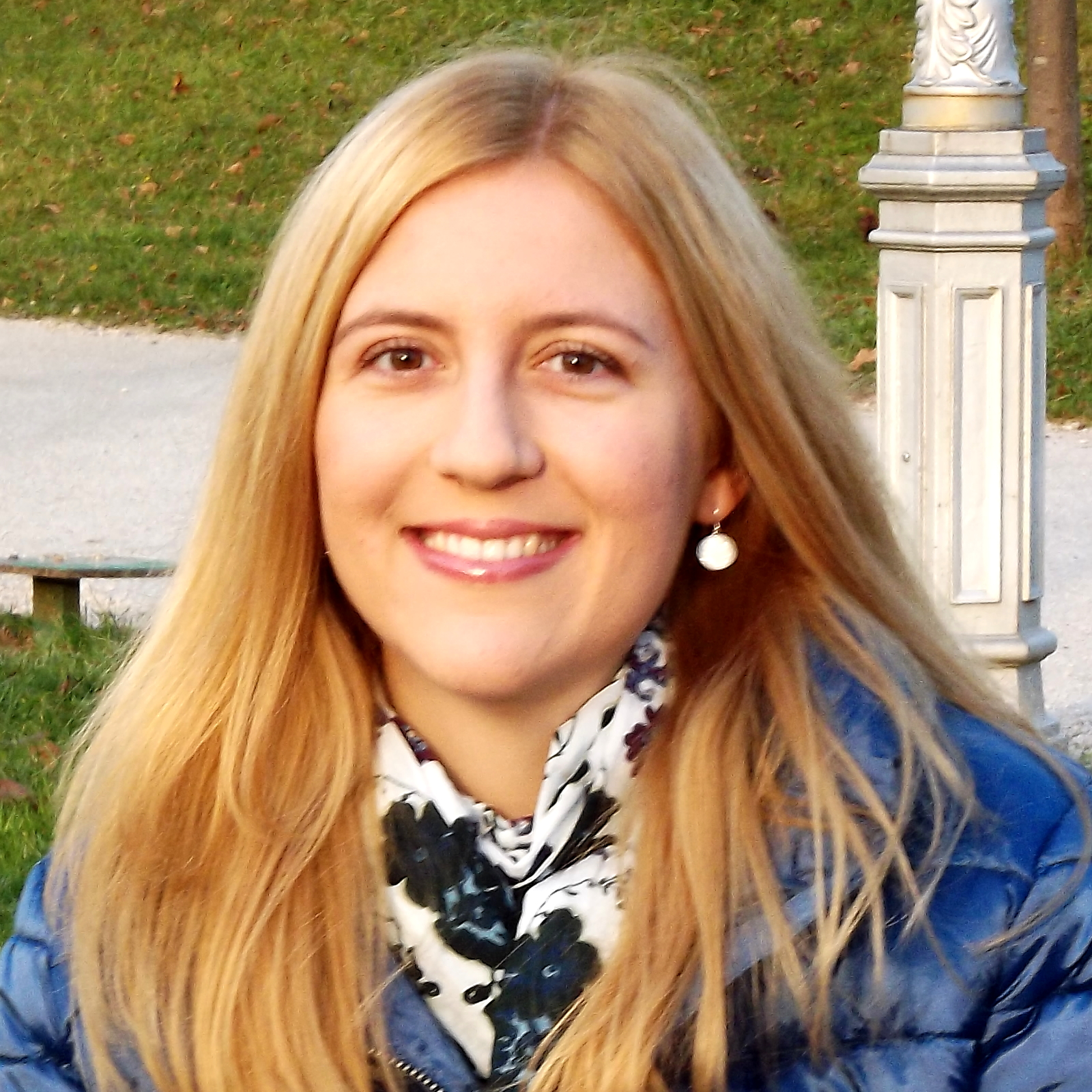Teaching, Mentoring & Leadership
Teaching Experience
- Assistant Professor, University of Ljubljana, Slovenia (2024 – present)
- Subject: Atmospheric Numerical Modelling
- Content: Introduction to models and model errors. Examples of atmospheric numerical models (AGCM, NWP, CRM, LES, DNS). Prognostic and diagnostic variables / equations. Partial differential equations (PDEs) in meteorology. Advection equation. Navier-Stokes equations. Primary and secondary circulation of tropical cyclones, tornado structure and dynamics, and corresponding PDEs. Method of characteristics. Finite difference methods to approximate derivatives (forward, backward and central difference approximations) including derivation and accuracy analysis. Finite-difference approximations of first, second and mixed derivatives as well as Laplacian operator are examined in detail. Numerical schemes: upstream / upwind scheme for advection (working example), truncation error and consistency condition, discretization error and convergence condition, Courant-Friedrichs-Lewy (CFL) criterion. Testing stability of numerical schemes using direct, energy and von Neumman methodologies. Grids: regular (lat-lon), triangular and hexagonal grids, structured and unstructured grids, unstaggered and staggered grids (Arakawa), nesting, variable-resolution modelling. Vertical discretization, various choices for vertical coordinates such as height, pressure, sigma (terrain-following coordinate), hybrid pressure-sigma, etc. Methods for time integration: general formulation for a family of multi-level, noniterative, explicit and implicit time schemes. Overview of explicit (e.g., Euler, Adams-Bashfort, Leapfrog) and implicit (e.g., trapezoidal, Adams-Moulton) time schemes including accuracy analysis. Noniterative versus iterative (“predictor-corrector”) schemes (e.g., Runge-Kutta). Spectral methods. Radiative transfer theory and modelling. Air pollution theory and modelling. The seminar part of this subject demonstrates numerical modelling of tropical cyclones using the NCAR Cloud Model (CM1). Other state-of-the-art atmospheric numerical modelling examples from worldwide communities (e.g., Waves To Weather, DYAMOND/++, CMIP6) are shown in class.

Shallow cumulus cloud field evolving into stratocumulus deck as simulated with the University of California, Los Angeles, large-eddy simulation (UCLA-LES) (figure courtesy of Črnivec and Mayer, 2019)
- Subject: Meteorological Observations and Instruments
- Content: This subject covers a wide array of meteorological observations and instruments, encompassing both in-situ and remote sensing measurement techniques. Principle of measurement and sources of errors are discussed. Various types of meteorological stations, metadata, data quality control, and data homogenization are explained. Instruments and observations introduced in this subject include thermometer, hygrometer, psychrometer, barometer, anemometer, rain gauge, disdrometer, heliograph, radiometer, ceilometer; classic observations of clouds and other meteorological phenomena at synoptic weather stations, visibility; soil observations, snow measurement, evaporation and evapotranspiration measurement. Direct upper-air measurements with weather balloons and airplanes (WMO AMDAR system). Atmospheric remote sensing (passive, active). Meteorological radar (including Doppler and dual polarization measurement techniques), lidar, sodar. Exploitation of GNSS/GPS signals for meteorological applications. Meteorological satellites (geostationary versus polar orbit) including an overview of major satellite missions of NASA (such as CloudSat, CALIPSO, PACE) and ESA (Aeolus, EarthCARE). Overview of important field campaigns (such as NASA HS3, EUREC4A, NOAA ATOMIC, NASA/ESA JATAC, ORCESTRA).

Visiting weather radar and meteorological station at Lisca, Slovenia (photo collage credit: L. Likar, N. Črnivec)
- Subject: Meteorology
- Content: This subject closely follows classic Introduction to meteorology textbook, it combines theory with multiple practical examples / exercises, and covers a broad range of topics: Composition of the atmosphere, characteristic layers of the atmosphere, international standard atmosphere. Meteorological variables, weather, and climate. Ideal gas law, humidity, change of atmospheric pressure with altitude, thermodynamic energy equation. Temperature change of ascending / descending air, convection, static stability, examples of very stable layers in the atmosphere, convective (in)stability of the atmosphere. Cloud formation, cloud classification, fog, precipitation, thunderstorms. Scalar fields, isolines, and gradients. Advection. Forces and momentum equation, balanced flow winds, the surface (friction) layer and turbulence, influence of friction on balanced flow winds. Weather fronts. Local winds. The continuity equation. Solar and terrestrial radiation, passage of radiation through the atmosphere, energy of solar radiation at the Earth’s surface. Equilibrium planetary temperature and the greenhouse effect, global warming, climate change. General circulation of the atmosphere. Meteorological measurements, numerical weather prediction.
- Content: This subject closely follows classic Introduction to meteorology textbook, it combines theory with multiple practical examples / exercises, and covers a broad range of topics: Composition of the atmosphere, characteristic layers of the atmosphere, international standard atmosphere. Meteorological variables, weather, and climate. Ideal gas law, humidity, change of atmospheric pressure with altitude, thermodynamic energy equation. Temperature change of ascending / descending air, convection, static stability, examples of very stable layers in the atmosphere, convective (in)stability of the atmosphere. Cloud formation, cloud classification, fog, precipitation, thunderstorms. Scalar fields, isolines, and gradients. Advection. Forces and momentum equation, balanced flow winds, the surface (friction) layer and turbulence, influence of friction on balanced flow winds. Weather fronts. Local winds. The continuity equation. Solar and terrestrial radiation, passage of radiation through the atmosphere, energy of solar radiation at the Earth’s surface. Equilibrium planetary temperature and the greenhouse effect, global warming, climate change. General circulation of the atmosphere. Meteorological measurements, numerical weather prediction.
- Subject: Air & Air Pollution (meteorological part)
- Content: This subject consists of chemical and meteorological part. The latter introduces basic meteorology concepts required to understand the transport, dispersion and (wet) deposition of air pollutants, before addressing topics such as advection-diffusion equation, plume rise, analytical Gaussian plume models for point- and line-emission sources, numerical Eulerian and Lagrangian approaches to air pollution modelling.
- Content: This subject consists of chemical and meteorological part. The latter introduces basic meteorology concepts required to understand the transport, dispersion and (wet) deposition of air pollutants, before addressing topics such as advection-diffusion equation, plume rise, analytical Gaussian plume models for point- and line-emission sources, numerical Eulerian and Lagrangian approaches to air pollution modelling.
- Lecture: Clouds, Climate Modelling and Climate Change: How cloudy will our future be? within subject Selected Topics in Contemporary Physics
Content: Introduction to the Earth’s atmosphere – overview of various cloud phenomena and processes from the micro- to the global scale. Earth’s radiation budget and climate change, impact of clouds on Earth’s climate, aerosol-cloud-climate interactions, cloud-radiative effects, cloud feedbacks. Climate / Earth system modelling, high-resolution atmospheric (cloud) modelling. Recent progress / achievements in the field of clouds and climate science, assessment of feedbacks in different cloud regimes following the latest IPCC report.

How clouds will change as climate warms, and how this change in cloudiness will – in turn – affect our climate, remains one of the hardest puzzles in atmospheric science (photo: N. Črnivec)
- Lecture: Global Climate Modelling within subject Climate Change
- Content: As outlined below on this page.
- Content: As outlined below on this page.
- Subject: Atmospheric Numerical Modelling
- Invited lecturer, University of Ljubljana, Slovenia (2024)
- Lecture: Global Climate Modeling within interdisciplinary subject Climate Change (course principals: Dr. Žiga Zaplotnik, Prof. Dr. Miha Ravnik)
- Content: Climate system components and their multiscale nature, evolution of global climate models (GCMs) through various CMIP phases, basic architecture of current GCMs focusing on the atmospheric model (dynamical core, computational grids, physical parameterizations, example: radiation scheme). Standard CMIP6 experiments, shared socioeconomic pathways and emission scenarios, global climate projections and related uncertainties. Scientific and technical challenges associated with analyzing multi-model ensembles, climate model code genealogy, climate model evaluation, dynamical and statistical downscaling techniques to acquire regional climate information. Contemporary climate model development exploiting rich data stemming from field campaigns (such as EUREC4A) and high-resolution numerical modeling (large-eddy simulations, cloud-resolving models, benchmark 3D radiative transfer models).
- VIDEO, SLIDES, RESOURCES
- Lecture: Global Climate Modeling within interdisciplinary subject Climate Change (course principals: Dr. Žiga Zaplotnik, Prof. Dr. Miha Ravnik)
- Invited lecturer, University of Nova Gorica, Slovenia (2024)
Set of lectures within interdisciplinary subject Fundamentals of Environmental Science:- Lecture: Fundamentals of Meteorology I
- Content: Composition of Earth’s atmosphere (gases, aerosols, hydrometeors), vertical structure of the atmosphere, spatial and temporal scales of atmospheric motion / phenomena. Meteorological instruments and observations (thermometer, hygrometer, barometer, anemometer, rain gauge; weather balloon, radar, satellites). Cloud classification, various cloud microphysics regimes including liquid-phase, ice-phase and mixed-phase processes, common air lifting mechanisms leading to cloud formation (convective, orographic, convergent and frontal lifting).
- Lecture: Fundamentals of Meteorology II
- Content: Mesoscale shallow and deep moist convection, ordinary thunderstorms versus supercells / mesocyclones, hail, thunderstorm electrification, thunderstorm outbursts and gust front evolution, tornadoes, waterspouts. Synoptic mid-latitude weather systems (cyclones, anticyclones) and winds (geostrophic and gradient wind balance, realistic near-surface flow), weather fronts, typical cloud development along warm and cold fronts, general (planetary) circulation. Numerical weather prediction (governing equations, physical schemes, initial condition ensemble, forecast uncertainty sources), high-resolution atmospheric modeling.
- Lecture: Air Pollution and Climate Change
- Content: Air pollutants and their natural and anthropogenic sources, particulate matter, tropospheric versus stratospheric ozone, greenhouse gases. Solar and terrestrial radiation, absorption spectra of atmospheric gases, Earth’s radiative balance versus imbalance (greenhouse effect), indicators of climate and environmental change, Nobel Prize in Physics for climate science / modeling groundwork. Multiple climate system components and their interactions, impact of aerosols on clouds and climate, cloud feedbacks, climate tipping points, future climate change at global scale and in Slovenia, action to address climate crisis in Slovenia.
- Lecture: Fundamentals of Meteorology I
- Invited lecturer, University of Ljubljana, virtual (2022)
- Lecture: Radiative Transfer Modeling in a Cloudy Atmosphere (audience: bachelor and master students of Meteorology and Physics, host: Dr. Žiga Zaplotnik)
- Content: The lecture covers basic principles of radiative transfer theory (absorption, scattering, emission), radiative heating rates in clear-sky versus cloudy atmosphere, three-dimensional Monte Carlo radiation modeling and Independent Column Approximation, two-stream methodology, traditional (plane-parallel) and state-of-the-art representation of subgrid cloud structure in radiation schemes of weather and climate models (e.g., Tripleclouds).

Various representations of clouds / convection in atmospheric numerical models importantly affect the calculation of radiative transfer (figure courtesy of Črnivec and Mayer, 2021; thunderstorm photo credit: Marko Korošec Weather Photography).
- Lecture: Radiative Transfer Modeling in a Cloudy Atmosphere (audience: bachelor and master students of Meteorology and Physics, host: Dr. Žiga Zaplotnik)
- Teaching assistant, Ludwig-Maximilians-University Munich, Germany (2016 — 2018)
- Subject: Clouds: Microphysics and Convection (Meteorology master’s study course, lecturers: Prof. Dr. Markus Rapp, Dr. Tobias Zinner)
- Content: The lecture covers cloud processes from the micro- to the meso-scale. The “Microphysics” part includes topics such as droplet formation, diffusional droplet growth, coalescence, precipitation, distinguishment between the warm, cold, and mixed-phase cloud microphysics, aerosol direct/indirect effects, thunderstorm electrification and lightning. The “Convection” part covers the convective instability criteria, generation and organization of convection (single cell, multicell, supercell), tornadoes (Rankine vortex model), thunderstorm outflow, downdrafts, mesoscale convective systems (squall lines, tropical cyclones).

- Subject: Clouds: Microphysics and Convection (Meteorology master’s study course, lecturers: Prof. Dr. Markus Rapp, Dr. Tobias Zinner)
Mentoring Experience
- Mentor, Atmospheric Science Seminar (literature review), MSc-level subject, University of Ljubljana (2025 – present):
- Seminar title: Thunderstorms in a warming world: Observed trends and future projections
- Seminar title: Climate model downscaling: How to optimally acquire information about regional climate change from global climate models?
- Seminar title: Thunderstorms in a warming world: Observed trends and future projections
- Mentor, Climatematch Academy: Computational Tools For Climate Science, virtual summer academy for worldwide students (2023)
- Role: Providing guidance to students on various issues such as professional development, research strategy, computational tools for Earth system science, technical and soft skills, effective collaboration and networking, principles of scientific integrity and inclusive work environment, science communication, bridging the gap between climate research and climate action, career advice for minority groups including women in science.
Certificate of appreciation
- Role: Providing guidance to students on various issues such as professional development, research strategy, computational tools for Earth system science, technical and soft skills, effective collaboration and networking, principles of scientific integrity and inclusive work environment, science communication, bridging the gap between climate research and climate action, career advice for minority groups including women in science.
- Co-supervisor of bachelor student (together with Prof. Dr. Bernhard Mayer), Ludwig-Maximilians-University Munich, Germany (2017)
- Thesis title: Modellierung von 3D solaren Erwärmungsraten in Abhängigkeit vom Aspektverhältnis der Wolken (Modelling of 3D solar heating rates as a function of cloud aspect ratio)
Leadership Experience
Co-lead of the World Climate Research Programme’s Fresh Eyes on CMIP Data Analysis working group (Aug 2023 – present)
- Role: Together with Dr. Joshua Dorrington (KIT, Germany) and Dr. Abdullah Al Fahad (NASA GSFC, USA) I’m currently leading a global team of early career researchers aiming to advance data analysis tools for the next phase of the Coupled Model Intercomparison Project (CMIP). Thus if you have encountered any issues or challenges when analyzing CMIP6/CMIP5 data, please reach out and share your concerns, so that we can strive for proper improvements in CMIP7.
- Task: As a first step we are striving to complete the list of Tools for using climate data including various data access platforms, programming languages and useful packages, command line operators, evaluation and benchmarking tools as well as other data analysis and visualization tools. Please feel free to explore the Tools repository and make suggestions about further practical tools that should be added to the repository.
- Upcoming event: We are organizing a webinar about CMIP / climate data analysis tools to be held in summer or early autumn. The interactive workshop will consist of both theoretical introduction and practical session with hands-on examples on how to use various climate data analysis tools at a beginner, intermediate and advanced level. More information coming soon!

Co-lead of the “RESCCCUE – REminding Slovenian authorities Climate Change Crisis requires Urgent Effort” project team, awarded European Meteorological Society Outreach and Communication Award (2020)
- Role: Together with Dr. Žiga Zaplotnik, Dr. Lina Boljka and Dr. Aljoša Slameršak I brought together over 100 leading Slovenian scientists from various disciplines comprising meteorologists, climatologists, oceanographers, physicists, biologists, chemists, geographers, and others, to advance climate literacy and science-based climate policy making in my home country Slovenia.

